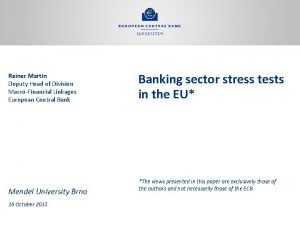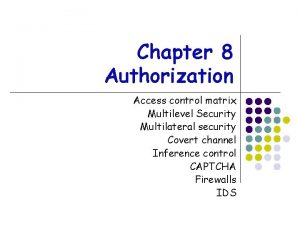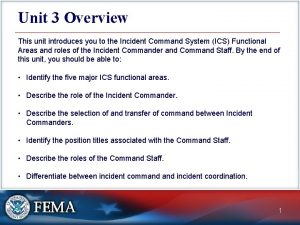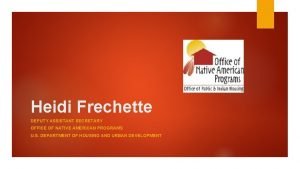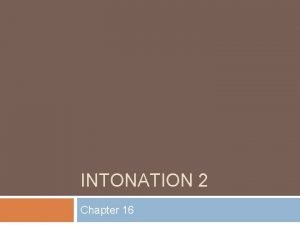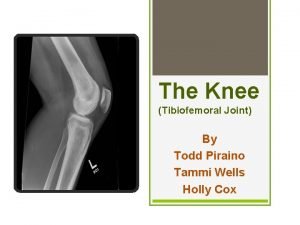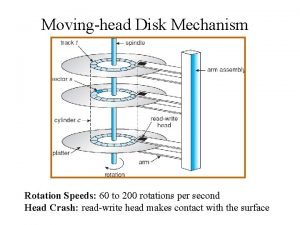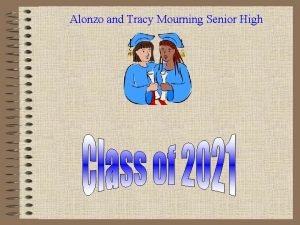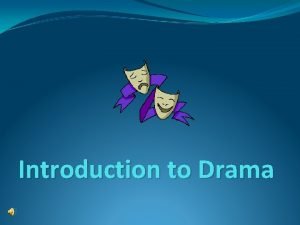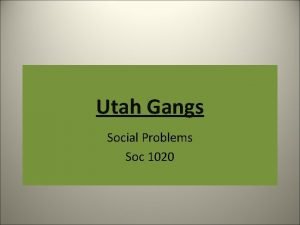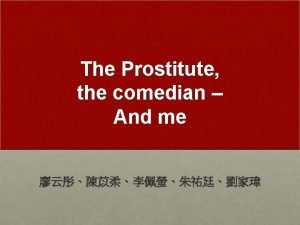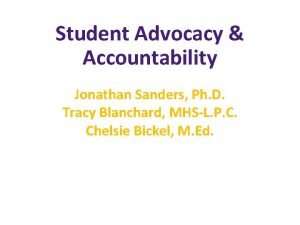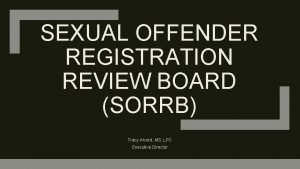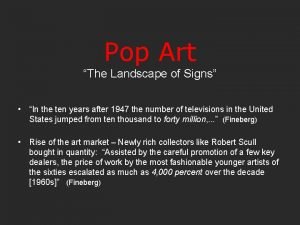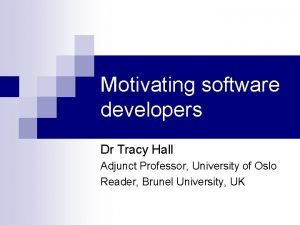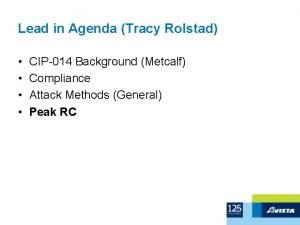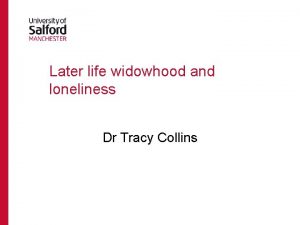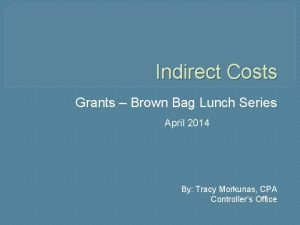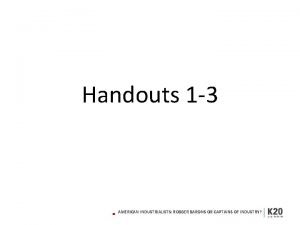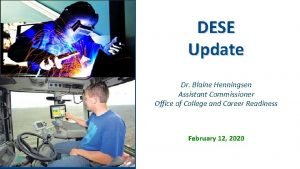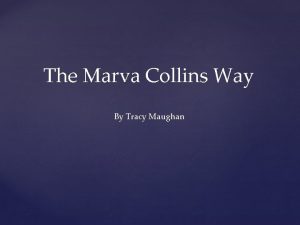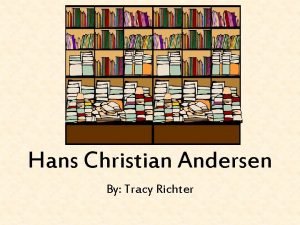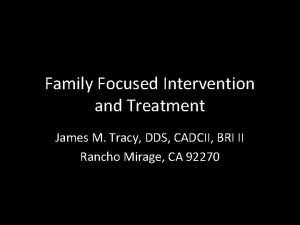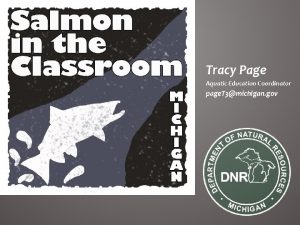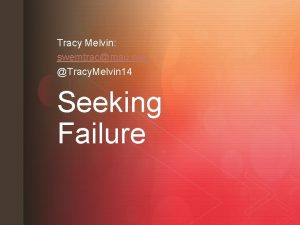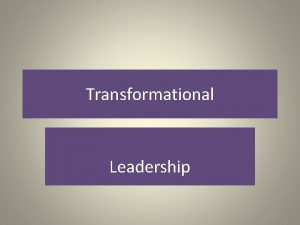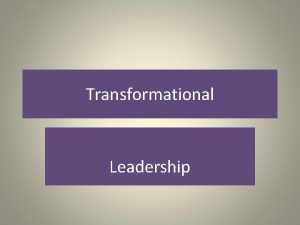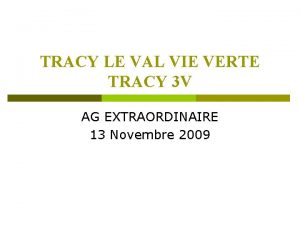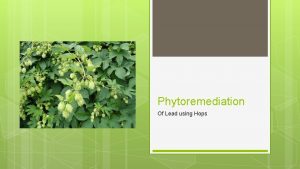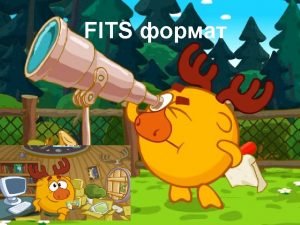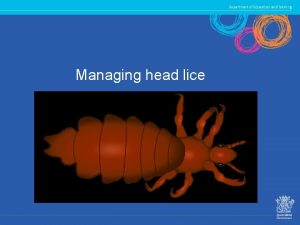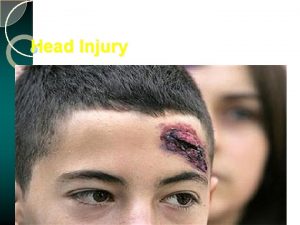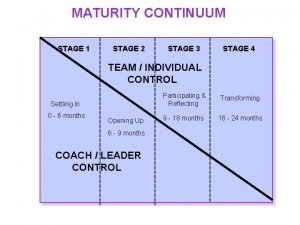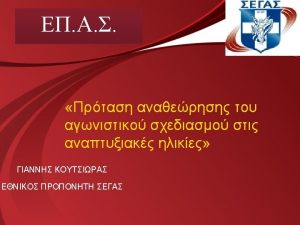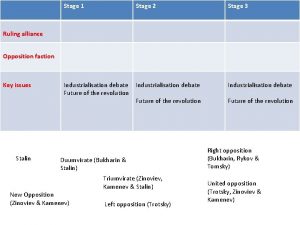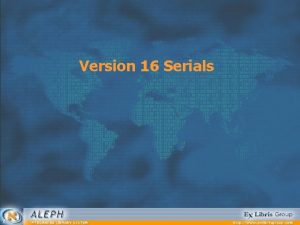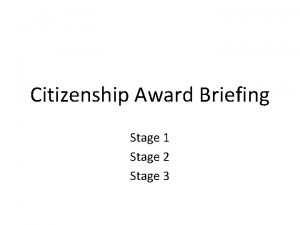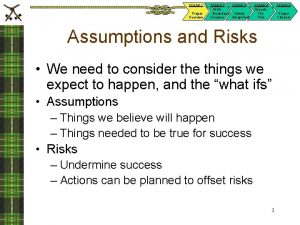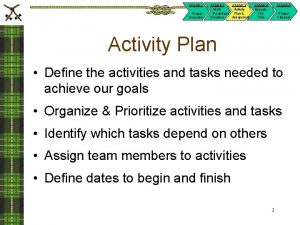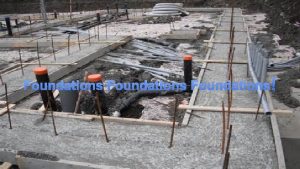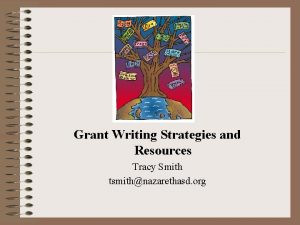Tracy Smith Deputy Head and Foundations Stage Lead























































- Slides: 55


Tracy Smith – Deputy Head and Foundations Stage Lead at Leigh Beck Infant Academy Deliver the ETFS specialism for SCITT Previously an AST for Foundation Stage and Phonics Nicola Whybrow - Deputy Head and Foundations Stage Lead at Braiswick Primary School support for EYFS External mentor for SCITT 2

Session 1 What is your definition of learning through play? What would you expect to see? What does it look like in your setting? How would it differ from babies to Nursery to Reception?

Caine’s Arcade Key Points –

This has become a more important part of the curriculum! Should be evident in observations, planning, transition to year 1 and all curriculum areas! What are the children like as a learner? What skills do they show?

Specific Areas Literacy Maths Expressive arts and design Understanding the world Prime areas Personal social Emotional development Physical Development ra pl o Ex an d y Active Learning ng ki in Pl a (role of the adult) Th Characteristics of Learning Positive Relationships d Enabling Environment an ity iv at lly re a C ritic C tio n Communication & Language

The completed EYFS profile must include a short commentary i. e. 1 -2 paragraphs on each child’s skills and abilities in relation to the three key characteristics of effective learning. These descriptions must reflect ongoing observations of the child within formative assessment processes and should take account of all the relevant records held by the setting and include information from the child , their parents and other relevant adults 7

Have a look at the articles from the Foundation Stage Forum and highlight and DISCUSS anything you find interesting!

Children will automatically look to an adult or will alter how they are playing to suit what they think the adult wants to see! How can we interact effectively within children’s play WITHOUT leading or taking over the play? 9

Sustained, shared thinking is a process which involves the adult being aware of the child's interests and understanding, and the adult and child together developing an idea or skill. Providing appropriate contexts for thinking, interacting with children and sharing children's small group interactions are just some of the ways in which this can be achieved.

• SUSTAINED - it must carry on for a while but this could be varying lengths of time; this therefore requires flexible planning and contingencies for ensuring that other children are safe and provided for. • SHARED - both child and adult must be contributing, there are various ways to encourage the dialogue and find out the child's ideas. • THINKING - there are six critical thinking skills identified that are developed through sustained shared thinking.

• Why is it important? It is now explicitly stated in the EYFS that sustained shared thinking should be a part of a child’s creativity and critical thinking (EYFS 4. 3). It is also indirectly described in all of the six areas of learning and development (EYFS 4. 4). • Creative thinking and problem solving skills enable children to come up with ideas and suggestions and to use their imagination to think of creative solutions. • Reasoning skills enable children to use logic; make connections; give reasons for opinions and explain actions; and make informed judgements and decisions. • Imagination These skills enable children to suspend their disbelief and think imaginatively.

Feeling Favourite Question 13

Session 2 What is a Learning Journey? Why do we need them? What different examples of Learning Journey’s have you seen? Discuss on your table!!!! Time to share! 14

This is a very important document that is unique to each child. 15 It is important the learning journey takes into account a range of observations. It is the child’s personal learning map and shows their own journey.




These are very high on advisors agendas at the moment. It’s all about having enclosed spaces for children to feel safe and secure in.

Linked to Of. STED’s Outstanding Reading School. What do Book Corner’s need to have? ? -How well is it resourced? -Is it inviting?

Early Education’s new document, Development Matters in the Early Years Foundation Stage, suggests “Create areas in which children can sit and chat with friends, such as a snug den and cosy spaces”. What are they?

Elizabeth Jarmen Communication Friendly Spaces Elizabeth Jarmen is the expert on the area of cosy corners she delievers training and has written books to support the subject. ‘it’s critical to understand how the physical space should connect with its intention. I think it’s essential to tune into the environment from the learner’s perspective. To do this, it is really important to observe, reflect and then make informed decisions about the way that children and families interact with the environment if a developmentally appropriate, personalised, responsive learning space is to develop, reflecting preferred contexts for learning. ’

Families feel welcome

Cosy spaces can be simple Infants and toddlers like to have small spaces where they can relax and feel safe.

Be creative Consider various ways that you can make use of the space that is available.

Closet Space You may have closet space available in the children’s play space. Consider using it as a cosy corner for the children instead of as a storage location. Spaces for privacy and quiet must also be easy to supervise to ensure the safety of the children.

Fabric is used to create a feeling of a separate space and privacy. Fire retardant fabric should be used. This space is large enough for two children to share and so supports the growth of relationships.

This space includes a mirror so children can see themselves when they look up.

Self Regulation When there is space to do so, children can learn to self regulate their behaviour and take a break when they are feeling overwhelmed. Children have varying tolerance levels and some may need a place to go and “chill” before rejoining peers. When your environment has a cozy, homelike feel that brings out strong connections among the people there, they will experience a sense of belonging and security. ” Curtis and Carter, Designs for Living and Learning, 2003

Partnerships Share materials or resources with other facilities when the children are done with them. Create partnerships such as with the local high school or college to create materials.

Hugely important in all Early Years settings! What learning do they cover? What types of role play areas could be created within the foundation stage area? Inside and/or Outside?

Children’s involvement? ? ? Any good ideas? ? ? Continuous provision Resourcing? ? ?

On the large sheets of paper in pairs or threes Choose 2 different role play areas from the list – Write down – What resources you could use in the chosen area What areas of learning could be covered? How?

Resources wish list What do you think you would need to create spaces like this? Have you seen anything to share?

Feeling Favourite Question 35

Session 3 What is this? Why is it important? How do we do it?

‘Young children do best when they experience a coherent approach at home and across all the settings in which they are cared for and educated’.

Why is it important? Benefits for Parents The exchange of information facilitated by partnership allows parents to gain a new perspective on their child’s learning and behaviour at home. Practitioners can share their knowledge of, for example, the importance of play, the establishing of schemas, or the early developmental stages, in ways that are accessible to different groups of parents. Demonstrating that what they do with their child at home contributes enormously to their child’s learning may encourage parents to see themselves as coeducators. It can also give parents a wider context to place their child in. Encouraging parents to becoming more involved with their child’s learning and the setting can have very positive outcomes for them as individuals. Some may gain confidence or discover a new interest and become involved in the running of sessions for other parents or pursue other voluntary work or qualifications with children (Whalley). For many parents the greatest benefit of successful partnership will be the security that their child is being cared for and their horizons are being broadened in a setting that understands their child and the family.

Why is it important? Benefits for Practitioners In order to really know the child, practitioners need to get to know the family. In the amplification to standard 29 of the EYPS it states that ‘parents are the foremost and most enduring influence upon children in their formative years’. Tapping into this wealth of influence gives settings information to support and extend each child. Something that a child says or does may make no sense until they have been observed on a home visit, or a picture has been taken by the parent, or the key person has had a quick chat with dad at the end of a session

Why is it important? Benefits for children When all the significant adults in a child’s life share the common goal of their well being, the child will feel safe and secure. As practitioners and parents exchange information the child becomes known and understood both at nursery and at home. This enables all adults to support the child’s learning and to nurture their specific interests. On a more immediate level, there is the sheer joy and pride children feel when their dads come to a special session at nursery or when a granny or close family friend comes on a trip to the park.

How do we do it? Building partnership with parents has positive outcomes for all. Even the simple exchange of smiles and friendly conversation will create a relaxed and respectful atmosphere. But it takes time to establish real and equal partnership, and for this settings need to focus on diversity, inclusion and flexibility. After building initial ties between parents and practitioners, settings need to find ways of sustaining parental involvement in their child's learning and in the setting. Continuing to make time for parents is extremely important, including daily opportunities for a quick chat at the beginning and end of sessions. More formal meetings with parents should also be organised at regular intervals to review and plan a child's learning programme together.

What does this look like? What have you seen in your placement? What else could you do? Have a chat about it!!

What does this mean to you? Have a chat!! The revised EYFS refers to “school readiness” as supporting children to be ready for the opportunities available to them in Year 1. For practitioners in the Early Years Foundation Stage, including those in reception classes, it is important to consider the notion of children’s readiness for the next phase of their learning journey.


Continuing the Learning Journey Children who are given the right support through transitions will successfully move from one phase of learning to the next. Transition needs to be considered sensitively and on an individual child level. Good communication needs to be established with children, their families and all professionals involved. Specific support that a child may need should be planned, particularly for those children who have been identified as likely to find the transition difficult.

Visits to new class to visit and work with new teacher Transition meetings between teachers including creating the groupings for the new teacher Next teacher to attend meeting at end of year with current teacher and parents to discuss levels and progress towards the ELG’s New staff to spend time in child’s existing class to observe the children spontaneously and chat with keyworkers Staff visible and available to children within informal school times Sharing of important informal times e. g. story times Learning journeys sent to new teacher before going home Parents being involved by having access to new teachers, consultations. Transition boxes, books, photos and information about potentially anxious situations (meal times, toilets, etc) Consider a ‘sliding in’ approach for children who you have concerns about. Information for parents, workshops, etc Passports

Transition boxes Share your transition box with someone within the group. What did you learn about that person? What are the benefits? What are the pitfalls?

Session 4 Finally being seen as an important part of play throughout the EYFS Children need access to this type of play in order to see the positives and negatives. Parental opinion. Staff opinion What do you think? Take a look at the articles and decide!

Story kebabs are a way of giving children some resources to use to create their own story from the props that are included! Need to be used with a story structure Katrice Horsely is the current story telling Laureate and has developed a story structure to help people to tell a story. Lets have a go!

These can be extended into story boxes with more resources given children a greater choice of objects and language to include in their stories! These are ours! Please feel free to have a look through!!

Story telling is becoming a dying art! Children are not coming into school with a knowledge of familiar stories and are not able to tell a story at all! Story telling needs to be included every day in the classroom! To build upon the familiar stories that we need to be telling children it is important to encourage and extend their own vocabulary and story telling ability!

Because there a lot of speech and language problems now and children have a smaller spoken vocabulary there a few projects been set up to support teachers and parents! ICAN – training, support and activities for practitioners and parents www. ican. org. uk ECAT – Every Child a Talker – Essex CC run program TLC – Talk Listen Cuddle – workshops and story mornings across the county! Search for them on Facebook! http: //www. essex. gov. uk/Education-Schools/Early-Years. Childcare/TLC/Pages/Default. aspx

“It may seem an obvious thing to say but one of the best things we can do with young children is to have interesting and enjoyable conversations with them. . . as we go about our activities, whether at home or at nursery, pre-schools, playgrounds, the child-minding situation, or out and about. We should make a special effort to answer children’s questions, point out things that interest us, involve children . . . ” Michael Rosen, author of We’re Going On A Bear Hunt.

Plays a vital role within the whole of the Foundation Stage (as well as the rest of the curriculum!) Children need to have a firm and clear grounding for speech and language as well as an increasing vocabulary which children are coming into school with less and less! It is easier to sit in front of the TV rather than talking to our children and prams don’t help either!!!!

Final Thought: • “Let children be children. A skilled five year old grows from a busy four year old, a curious three year old, a cuddled two year old, an adventurous one year old and a communicative baby. “ • Quote by Jennie Lindon.
 Head girl manifesto for primary school
Head girl manifesto for primary school Reiner
Reiner Deputy stowers
Deputy stowers Onondaga county civil deputy
Onondaga county civil deputy Confused deputy
Confused deputy Deputy medical director
Deputy medical director Which ics functional area establishes tactics
Which ics functional area establishes tactics Deputy jody hull
Deputy jody hull Eft deputy chief
Eft deputy chief Daniel stephens md
Daniel stephens md Stephen deputy md
Stephen deputy md Deputy manager wikipedia
Deputy manager wikipedia Betty parris the crucible indirect characterization
Betty parris the crucible indirect characterization Hud assistant secretary
Hud assistant secretary Frequency dependence of dielectric constant
Frequency dependence of dielectric constant Dividing head chart
Dividing head chart Flood suction pump
Flood suction pump What is 2 stage tendering
What is 2 stage tendering House left vs stage left
House left vs stage left The attacking firm goes head-to-head with its competitor.
The attacking firm goes head-to-head with its competitor. Informtika
Informtika Operation of moving head disk storage
Operation of moving head disk storage Shin body part
Shin body part Pre-head head tonic syllable tail
Pre-head head tonic syllable tail Innervation of biceps femoris short head
Innervation of biceps femoris short head 7 tones
7 tones The head of moving head disk with 100 tracks
The head of moving head disk with 100 tracks Alonzo tracy mourning high school
Alonzo tracy mourning high school Stage 1 denial
Stage 1 denial Staging theatre definition
Staging theatre definition Proscenium stage positions
Proscenium stage positions Stage right stage left
Stage right stage left Tracy werner
Tracy werner History ogden trece
History ogden trece Porn hnh
Porn hnh Tracy cosgriff
Tracy cosgriff Tracy macgrady
Tracy macgrady Tracy blanchard lsu
Tracy blanchard lsu Sorrb
Sorrb Tracy rolstad
Tracy rolstad Exhibition
Exhibition Motivation for software developers
Motivation for software developers Billy joel tracy
Billy joel tracy Tracy rolstad
Tracy rolstad Dr tracy collins
Dr tracy collins Tracy morkunas
Tracy morkunas How did business leaders earn the nickname robber barons
How did business leaders earn the nickname robber barons Tracey hinds
Tracey hinds Marva collins way
Marva collins way Hans christian oersted quotes
Hans christian oersted quotes Tracy garceau
Tracy garceau Tracy james model
Tracy james model Tracy masterson
Tracy masterson Tracy page facebook
Tracy page facebook Tracy melvin
Tracy melvin Dental compliance manager
Dental compliance manager

